
Leonardo Torres y Quevedo
©History-Computer.com
3 Facts about Leonardo Torres’s Chess Machine
- The machine could, in a totally unassisted and automated fashion, deliver mate with King and Rook against King.
- Although referred to as a chess player, Leonardo’s El Ajedrecista was not designed to play the whole chess game. Instead, the automaton was made to play a part of the chess game – a Rook and King, an endgame.
- El Ajedrecista was to play this endgame against a human being who also had a King. It’s funny that irrespective of where EL Ajedrecista started, it was able to mate its opponent whenever the two met. However, this was also limited because of the minimal moves.

Leonardo Torres’s Chess Machine History
In the beginning of 1910, Leonardo Torres y Quevedo commenced his work to make a chess-playing automaton, to prove his theory that machines could do many things ‘popularly classed as thought.’ Torres designed the first automaton machine that had the unique ability to play chess. This was the first automaton of its kind in the world. Leonardo called it El Ajedrecista, a Spanish name translated ‘The Chess Player’. Although it did not play the whole game (from start to finish), El Ajedrecista could make several moves, calculate well, and ‘mate’ with its opponent.
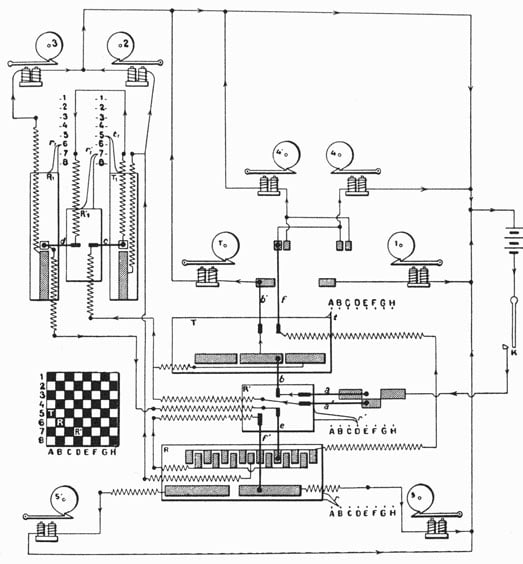
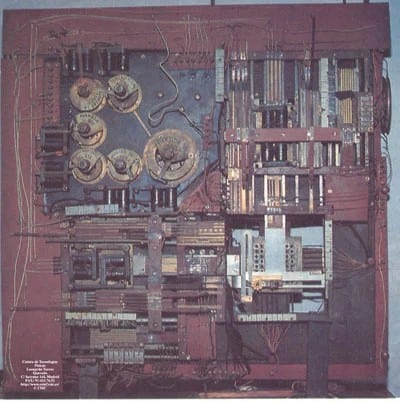
The first chess-automaton of Torres
©History-Computer.com
Unlike modern electrical automaton machines, the El Ajedrecista was mechanical. Before Torres built his chess machine, he had tried several other things. For instance, he had studied mathematics thus he built an algebra equation solver.
However, it appears that the Spanish inventor was fascinated with mechanical inventions rather than electrical, although it is clear that back then, not many inventions were based on electricity. For this reason, he created the first mechanical chess player machine in 1912. Torres used electromagnets that he placed under the board of his invention to play a chess game.
Although no one can say with certainty how this machine was able to deliver and execute its moves, it is clear that El Ajedrecista did amazing moves. All the moves the chess machine made were self-initiated.
In an interview given to a Spanish journalist, Torres described briefly his machine as follows:
“It is an apparatus that plays chess with the king and the rook as if it were a person, knowing with absolute precision all moves that occur and always matting its opponent. Besides this, it warns its opponent, in a courteous manner, of any mistakes (i.e. illegal moves) made by his opponent by means of a light, and after its opponent has made 3 mistakes, it ceases playing, considering that its opponent is no match for it… This apparatus has no practical purpose, but it supports the basis of my thesis: that it is always possible to create an automaton whose actions always depend on certain conditions and which obey certain rules that can be programmed when the automaton is being produced. Evidently these rules will be such as to be self-sufficient to determine the performance of the automaton without any uncertainty and at any given moment.”
Leonardo Torres’s Chess Machine: How It Worked
When El Ajedrecista made its first public appearance in 1914’s Paris World Fair, two years after its invention, everybody was excited. Torres’s chess player used a mechanical arm to play chess.
Although the arms were operated mechanically, El Ajedrecista used electrical sensors to identify and detect any move made by its opponent, who in this case was human. Irrespective of where the chess player started, it was easy to make quick yet rhythmic moves.
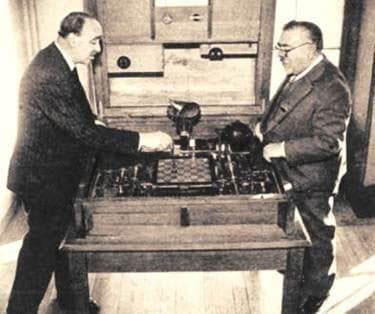
Gonzalo Torres demonstrates the chess-automaton to Norbert Wiener in 1951
©History-Computer.com
According to those who were present during the 1914 Paris World Fair, a few months before the outbreak of World War I, El Ajedrecista was flawless. Each time it made moves, it ensured it hit and mate with the opponent’s Rook and King.
Interestingly, the movement of EA’s white pieces solely depended on how the black King moved. In other words, El Ajedrecista could wait until the Rook and King made a move before it’d attack.
By studying the movements of the opponent’s Rook and King, it became easy for EA to defeat the opponent. The chessboard had 64 squares (8 columns x 8 rows). Each square has three metallic pieces.
An insulating material, usually made of rubber separated the metallic pieces. The metallic piece at the center was circular whereas the pieces at the sides took a triangular shape. The central piece was connected to a positive terminal.
The side pieces, on the other hand, were connected to horizontal and vertical conductors respectively. The base of the black King featured a silver mesh. It connected the piece at the center to the side pieces.
With the connection, it was now possible for the machine to close two circuits, which moved two sliding bars. The moves did not stop until they reached two positions, which determined the position of the black King on the chessboard.
Similarly, four sliding bars defined the Rook and the white King. At a time the black King moved, corresponding bars also moved and closed. This was made possible by electrical circuits and suitable contacts.
Leonardo Torres’s Chess Machine: Historical Significance
For years, chess has been one of the most fascinating games among millennials. The game enables one to think before making a move, something that gives players a sense of honor and esteem especially after winning.
To make the game even more fascinating, fanatics-turned inventors poured their resources to come up with chess player machines that needed little or no human aid at all. Baron Wolfgang von Kampelen became the first inventor to design a chess player.
Mr. Wolfgang presented Turk to the world in 1769. However, critics have it that the chess player was built on ‘fraudulent’ ideas. Because of that belief, there was a need to give future chess-player machines fresh and genuine ideas. That is how later innovations were built on artificial intelligence.
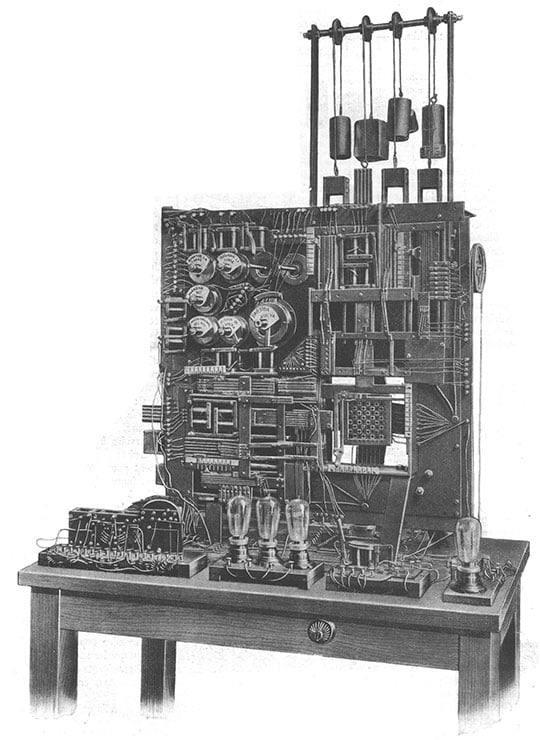

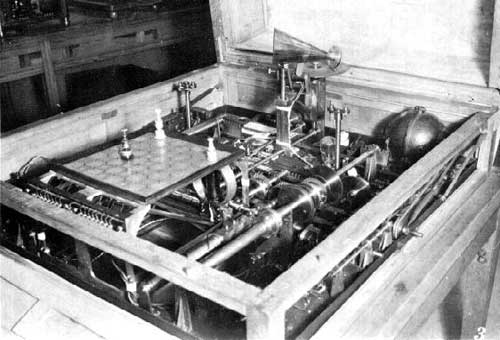
Before the invention of the chess computer, the robot that Torres built in 1912, laid a firm foundation for future chess machines that would depend on electricity to calculate and execute movements.
Both versions of Torres’ chess automaton are still working and are on display at the Colegio de Ingenieros de Caminos, Canales y Puertos in Madrid.